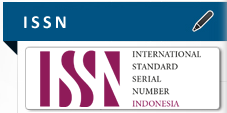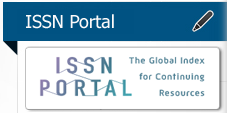MENU GIZI SEIMBANG UNTUK PENCEGAHAN STUNTING PADA BALITA DI DESA KABUPATEN KUDUS
Abstract
Stunting is a nutritional problem that is a major problem in Indonesia. The Ministry of Health provides health programs in dealing with the problem of stunting. One of the efforts made to prevent stunting is through nutrition education. The purpose of community service activities (PKM) is to improve the subject's attitudes and behavior regarding toddler nutrition and types of food for stunting prevention. The method used is community empowerment by providing nutrition education and cooking demonstrations to subjects in the villages of Ngembal Rejo and Purwosari, Kudus Regency. Subjects in this PKM are posyandu cadres and mothers who have toddlers. The education given to the subject is about toddler nutrition and types of food for stunting prevention. The results of education show that there is an increase in subject knowledge after being given education. Subjects from cadres are expected to become agents of behavior change in preventing stunting for toddlers. Meanwhile, the subject of mothers who have toddlers is expected to be able to change behavior in providing food to their toddlers.
Full Text:
PDFReferences
Amareta DI dan Ardianto ET. (2017). Penyuluhan Kesehatan dengan Metode Emo Demo Efektif Meningkatkan Praktik CTPS di MI Al-Badri Kalisat Kabupaten Jember. Seminar Nasional Hasil Penelitian 2017, ISBN: 978-602-14917-5-1.
Permatasari TA, Turrahmu H, Illavina. (2020). Edukasi Gizi Seimbang bagi Kader Posyandu pada Masa Pandemi Covid-19 sebagai Pencegahan Balita Stunting di Kabupaten Bogor. As-Syifa Journal. 1 (2):67-77.
Dhaded, et al. (2020). Preconception nutrition intervention improved birth length and reduced stunting and wasting in newborns in South Asia: The Women First Randomized Controlled trial. PLoS One [Internet]. 2020: 15(1): 1-15
Alam, MA., et al. (2020). Impact of early-oneset persistent stunting on cognitive development at 5 years of age.: Results from a multi-country cohort study. PLoS One: 15 (1):1-16
Sanou, AS., et al. (2020). Association between stunting and neuro-psychological outcomes among children in Burkina Faso, West Africa. Child Aldolesc Psychiatry Ment Health [Internet]. 2018; 12(1): 1-10.
WHO. (2013). Infant And Young Child Feeding. WHO Press. Switzerland.
Gladys Gunawan, E. F. K. R. (2011). Hubungan Status Gizi dan Perkembangan Anak Usia 1-2 Tahun. Sari Pediatri, 13(No 2), 142–146.
Handayani, R. (2017). FAKTOR-FAKTOR YANG BERHUBUNGAN DENGAN STATUS GIZI PADA ANAK BALITA. Jurnal Endurance, 2(2), 217. https://doi.org/10.22216/jen.v2i2.1742
Putri, R. F., Sulastri, D., & Lestari, Y. (2015). Faktor-Faktor yang Berhubungan dengan Status Gizi Anak Balita di Wilayah Kerja Puskesmas Nanggalo Padang. In Andalas (Vol. 4, Issue 1). http://jurnal.
Risma Adiyanti. (2009). Hubungan antara status pekerjaan ibu dengan status gizi dan perkembangan anak usia 1-3 tahun di Kecamatan Kadia Kota Kendari.
Diah, et al. (2008). Menyiapkan makanan pendamping ASI. Jakarta: Puspa Swara
Nurhaeni A. (2009) Panduan Ibu Cerdas-ASI dan tumbuh kembang bayi. Yogyakarta: Media Pressindo;
WHO Global Strategy for Feeding Infant and Young Children (2003). https://www.who.int/health-topics/complementary-feeding diakses 1 Agustus 2023: 10:52
DOI: https://doi.org/10.26751/jai.v5i1.2029
Jurnal Abdimas Indonesia indexed by
Published by LPPM Universitas Muhammadiyah KudusJl. Ganesha Raya No.I, Purwosari, Kec. Kota Kudus, Kabupaten Kudus, Jawa Tengah 59316

This work is licensed under a Creative Commons Attribution-ShareAlike 4.0 International License.





